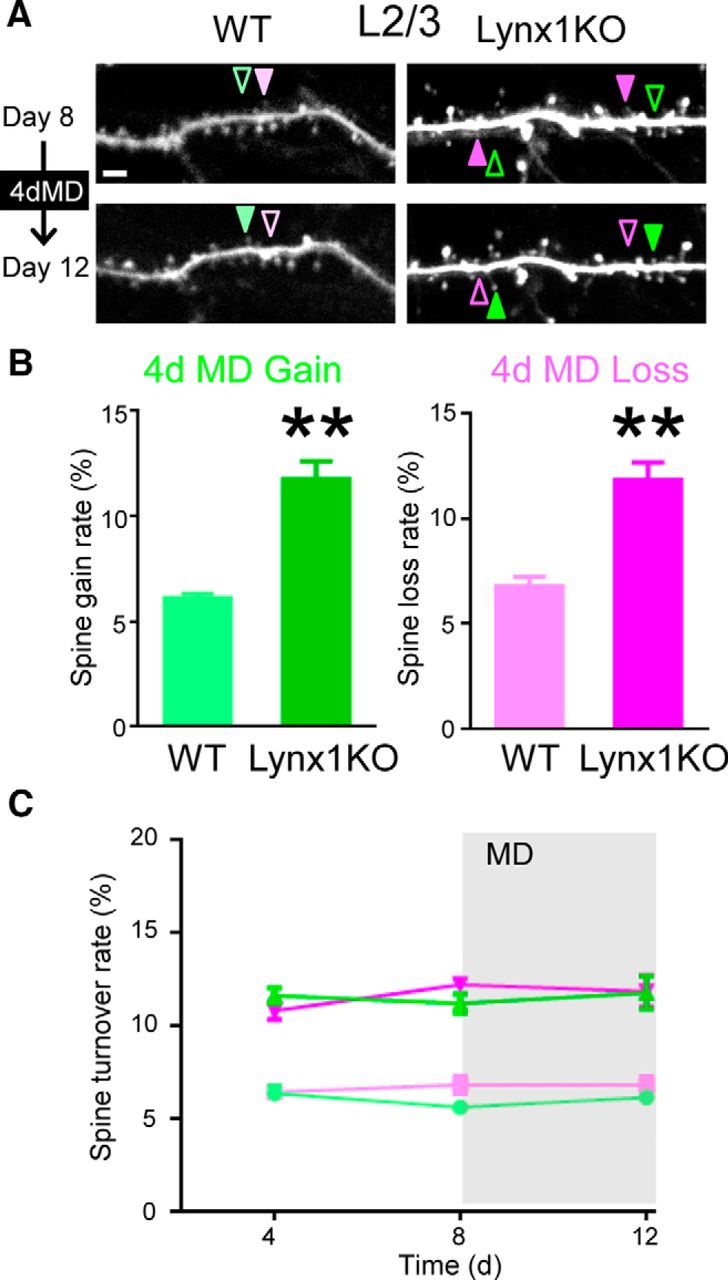Figure 4.

Spine gain and loss rates of adult L2/3 V1 neurons are higher in Lynx1-KO mice than in WT mice during MD. A, Repeated imaging of dendritic segment of adult L2/3 V1 neurons before (day 8) and after (day 12) MD. Light green (WT) and green (KO) arrowheads indicate spine gain. Light magenta (WT) and magenta (KO) arrowheads indicate spine loss. One to three dendrites were imaged from each cell to count total, gained, and lost spines in each cell. Scale bar, 5 μm. B, Spine gain and loss rate after 4 d of MD (4dMD). Spine loss rate was significantly higher in adult Lynx1-KO mice than in WT mice (WT: n = 10 cells from 5 mice, KO: 9 cells from 6 mice). **p < 0.01, Student's t test. C, Spine turnover rates over 4 d were plotted as a function of time. Light green, light magenta, green, and magenta indicate WT gain, WT loss, Lynx1-KO gain, and Lynx1-KO loss, respectively. MD occurred after day 8 imaging. Initial statistical analysis was done using MANOVA, in which interactions among three factors: genotype (knock out/wild type), type (gain/loss), and time (day 4/day 8/day 12) were assessed. Turnover rates significantly differed between genotype (KO vs WT, df = 35, exact F value = 164.860, p < 0.0001). The interaction between genotype and type was not statistically significant (df = 34, exact F value = 0.464, p = 0.500). Therefore, effects for the loss or gain value were assessed independently with ageneralized linear model, in which genotype and time were adopted as fixed-effect variables and cell was adopted as a random-effect variable. Genotype was statistically significant. (df = 42, F = 126.217 and p < 0.0001 for loss, df = 42, F = 199.452 and p < 0.0001 for gain), but time was not significant (df = 42, F = 1.708 and p = 0.193 for loss, df = 42, F = 1.047 and p = 0.360 for gain). Post hoc pairwise comparisons using Bonferroni modification did not detect any significant difference in any comparisons for loss or gain values. Data are presented as mean ± SEM.
